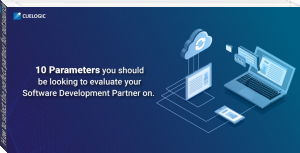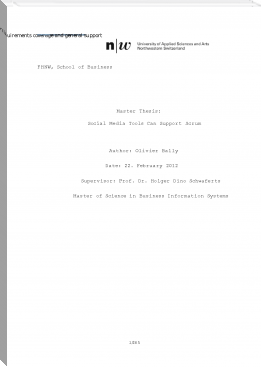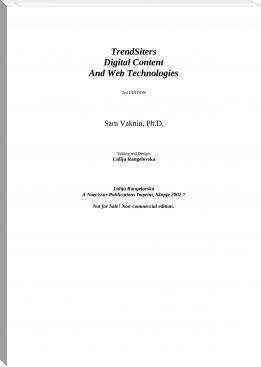How to select the perfect partner for outsourcing software development by Cuelogic Technologies (romantic story to read txt) 📕

Read free book «How to select the perfect partner for outsourcing software development by Cuelogic Technologies (romantic story to read txt) 📕» - read online or download for free at americanlibrarybooks.com
- Author: Cuelogic Technologies
Read book online «How to select the perfect partner for outsourcing software development by Cuelogic Technologies (romantic story to read txt) 📕». Author - Cuelogic Technologies
So, you’ve heard all about the advantages of outsourcing, and you’ve finally decided to hop on to that bandwagon yourself. After all, which business doesn’t want to opt for a cost-efficient practice that can facilitate better distribution of resources, right? However, when you decide to outsource software development services, one of the most pressing questions is this – How do you go about selecting the perfect partner?
There's no one-word answer. Still, it’s not impossible to figure out what the best outsource software development companies are. To help you go about this exercise, we’ve put together some pointers that make it easier for you to choose the right outsourcing partner. Read on to find out more.
1. Define Your Requirements
The first step to follow when you’re planning to outsource software development is to understand your own needs. Only when you do this can you identify whether a vendor is right for your project. So, start off by evaluating the nature of your business and understanding the requirements of your software development process.
Knowing these parameters can help you give your outsourcing partner a clear picture of your requirements. Of course, you don’t need to get to the specifics. Simply chart a broad outline of your general requirements and be open to the possibility of changes and suggestions from your outsourcing partner.
2. Do Adequate Research
Once you’ve defined your requirements, the next step is to conduct adequate research and identify the outsourcing vendors who can meet your specific needs. Look up the various forums and platforms that give you short bios of possible partners. Scour through customer testimonials and shortlist a few B2B service providers who fit your bill.
Remember that at this stage, you’re only looking for various options. So, it’s alright not to find the perfect fit. However, if you have any deal-breakers, it’s best to use them as filters. For instance, if you’re 100% certain that you need an outsourcing partner who is Agile, you can filter out potential partners who do not have experience in this technique.
3. Do Not Choose the Cheapest Options
As a general rule of thumb, vendors who advertise themselves as the cheapest in the industry are clearly the wrong choice. Let's look at the numbers here. The average salary of a good outsourced developer is as high as $2200-$2600 per month. Add to that infrastructure costs and overheads, and it goes upto $3200-$3600, at the very least.
So, if you're hiring much below these values, it's highly likely that the project
will never be delivered or will fail in the future. Hiring freelancers is also not a wise choice, as most of the developers on freelancing sites run a side job and only want to make a quick buck. So, don't shy away from spending what your project is worth.
4. Evaluate Their TeamAnother important aspect to consider when you decide to outsource software development is the dynamics in your vendor’s team. At the outset, it is extremely important to see whether your team can communicate in the same language as your in-house experts. This enables smoother communication and ensures that a lot of kinks are eliminated from your process.
If possible, talk to the team leader and look at the credentials and the experience of the team members to gauge their level of expertise. Understanding the work culture of your vendor’s team will give you some insight into what you’re in for. At best, you’ll want to opt for an outsourcing partner whose team is cross-functional, dynamic, and flexible.
5. Look at Their History
As a business, we’re sure you want the best outsourcing partner in the market. The relevant question here is – How do you go about finding them? The answer lies in their market reputation. Customer feedback and market history can tell you a lot about IT outsourcing companies.
Look at their history and evaluate the projects they’ve delivered to their previous customers. If there’s a possibility of finding testimonials from their past clients, pursue that option and get to know what their reputation is like. Should you spot any red flags, either get it clarified from the vendor, or scratch them off your list and look at your other options.
6. Pay Attention to Scalability
In this day and age, scalability is no longer an option. It’s a necessity. Your requirements as a business are bound to evolve and change with time. Is your outsourcing partner capable of meeting those growing requirements? That’s a question you’ll want to answer in the affirmative before you sign on the dotted line.
Verify if your offshore software development partner has the capacity to tap into local talent and quickly ramp up their team if needed, so that the product is seamlessly able to onboard new users. Also, check if there’s a local pool of talent for your outsourcing vendor to hire from. In the same vein, your partner should also be ready to scale down if, and when, it’s necessary.
7. Assess Their Development Process
Before you join hands with a vendor and outsource software development, stop and think about this – How does your outsourcing partner go about the process of software development? If you’re looking for an Agile partner, you’ve got to be smart while choosing a vendor, because Agile is a term that is thrown around a lot.
Owing to the growing popularity of merging the Agile technique with the practice of outsourcing, almost all companies have started to claim that they follow the Agile way of software development. However, not all companies have the experience of doing it. Look for practices like DevOps and SCRUM to help you understand how your product development will take place.





Comments (0)